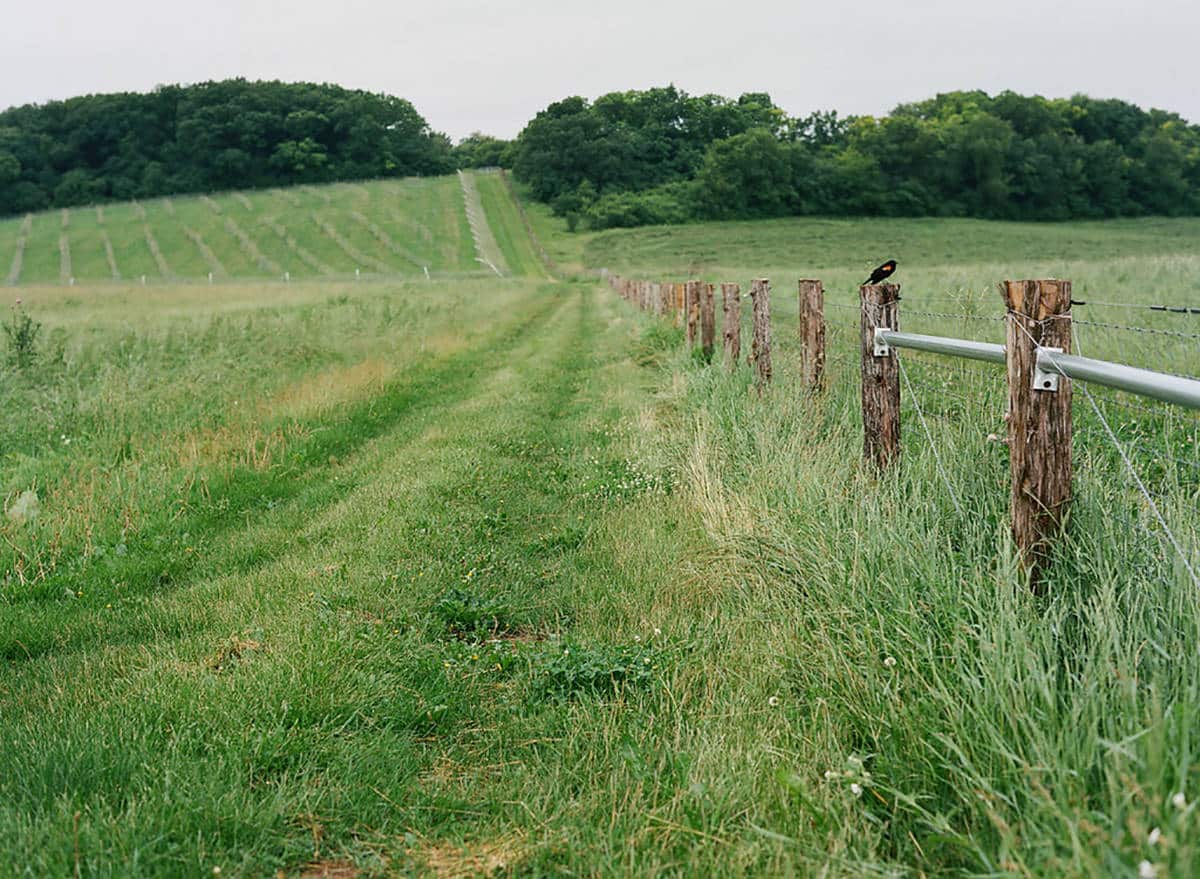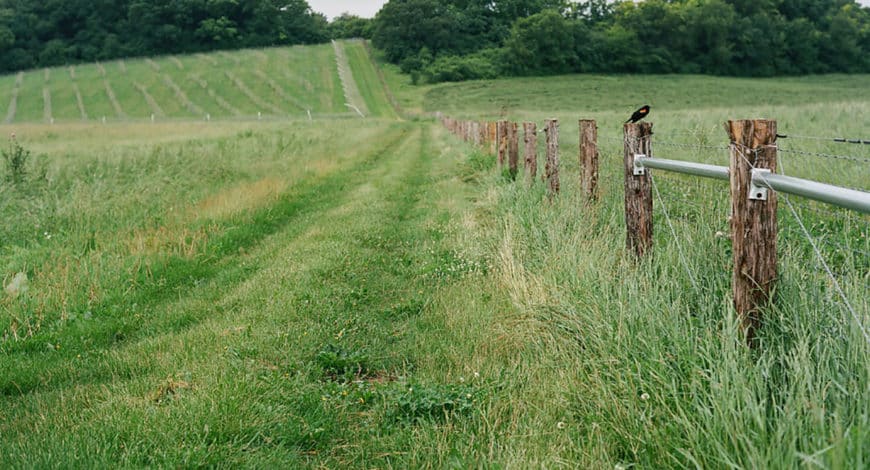
By Linda Halley | While Laurel’s focus is on the greenhouse, the vegetable plots, and our internet presence, my primary responsibilities are “everything else.” Laurel has systematically planned out planting dates, numbers of transplants needed, row-feet and projected yields. All of that was done in November and December, and now she carries it out, calmly planting and watering and monitoring growth day by day, altering the the schedule in the greenhouse when Mother Nature doesn’t cooperate fully.
Meanwhile, for the past two weeks, my “everything else” has centered on the 400 plus trees and shrubs I ordered for our orchard. They were slated to arrive in the midst of last week’s snow storm but the nursery made a kind recommendation to hold off the shipment until May 1. They heard loud and clear from all their Midwestern customers that spring was being stubborn this year. Now, with a grace period, several days of warm and dry weather, we took advantage of the opportunity to mark the tree rows and adjust the tree planter.
Much like Laurel’s plan for the vegetable plots, begun in November and December and carried out in spring, the orchard has been “gestating” for 9 months. In July I paced off the hillside and calculated that we could accommodate about 400 trees. The portion of the hillside that is wet in spring would be better suited to elderberries and currants. I researched commercial nurseries and placed orders late last summer. They informed me that to get the preferred varieties in large quantities, I needed to plan that far ahead. Hard to believe that now the time has come to put our roots in the ground.
While most commercial nurseries are opting to plant dwarf rootstock, Gwenyn Hill will be planting semi-dwarf trees that attain 12 – 15 feet in height. The dwarf trees need staking and trellising and irrigation. Our trees will need staking and irrigating only for the first couple of years as they get established. An orchard of dwarf trees looks similar to a vineyard, with trellis wires and short trees. Our orchard will take a couple years longer to begin producing and will look more old fashioned. No matter the type of orchard, fruit farming is demanding, requiring much attention and providing many rewards.
Here’s a list of our planned varieties in order of when they will ripen.
June: Red and Pink Champagne Currants
July: Early Golden, Methley, and Au Rosa Plums, Black Currants and Hanamaki Red Gooseberries
August: Red Free, Ginger Gold and Dandee Apples, Shinsui Asian Pears, and Elderberries
September: Crimson Crisp, Crimson Gold, Galarina and Liberty Apples
October: Shizuka, Querina, Albemarle Pippin, and Enterprise Apples, and Olympic Asian Pears
Now to practice patience. It takes two years for the berries and four to five years for the tree fruit. Ah, it is worth it though!

